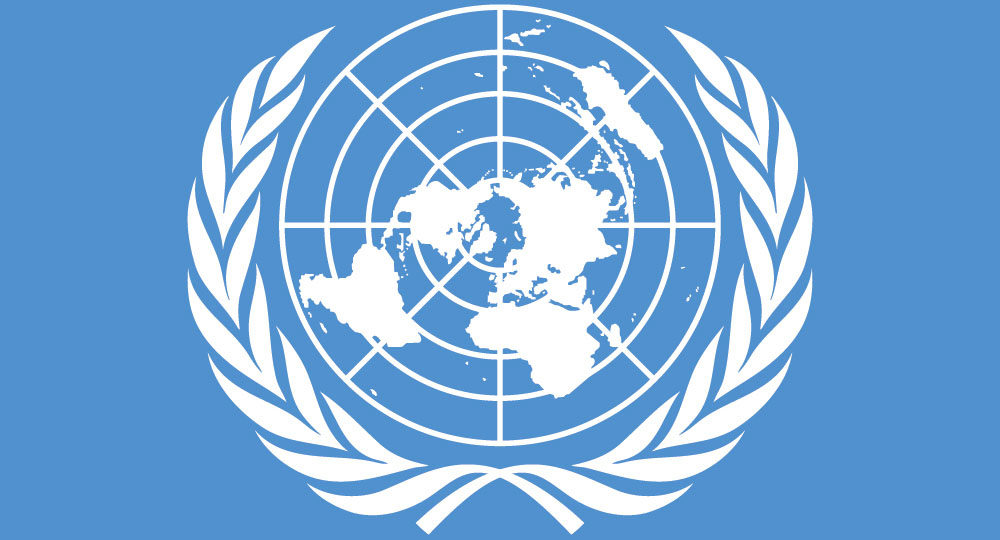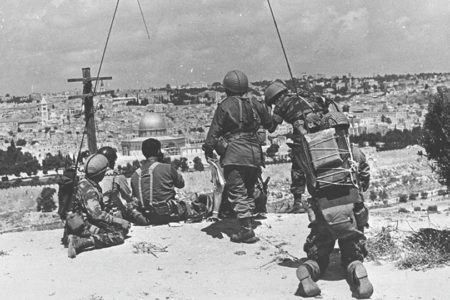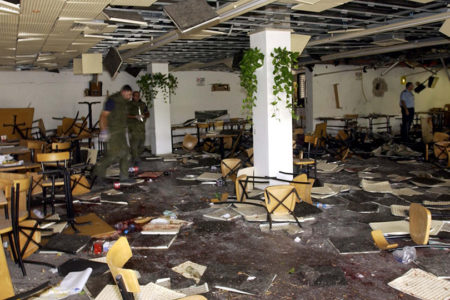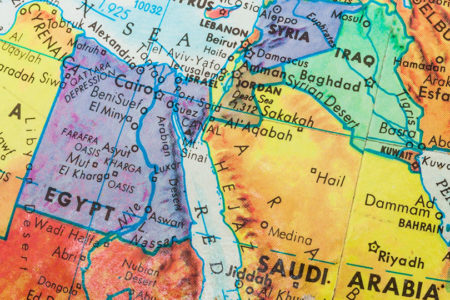The Key Resolutions
Israel will be 55 years old in May. The country was established under sanction of international law after the United Nations General Assembly passed Resolution 181 in 1947, dividing the remaining 23 percent of British Mandate Palestine into two states—one Arab, one Jewish.
The Arabs rejected the UN decision. In subsequent years, the UN passed Resolutions 242 and 338, which are often referred to during Arab-Israeli peace talks. Here is a synopsis of these key decrees.
UN Resolution 181
Adopted by the General Assembly November 29, 1947
Selected Portion
“Independent Arab and Jewish States and the Special International Regime for the City of Jerusalem, set forth in Part III of this Plan, shall come into existence in Palestine two months after the evacuation of the armed forces of the mandatory Power has been completed but in any case not later than 1 October 1948.”
Significance
This section is the heart of the resolution. It partitioned Palestine (referring to the area west of the Jordan River) into two separate and independent states—one Jewish and one Arab. Jerusalem was to have been an international city. This would have made the second Arab state carved from British Mandate Palestine, the first being Jordan in 1922.
Selected Portion
“The mandatory Power shall not take any action to prevent, obstruct or delay the implementation by the Commission of the measures recommended by the General Assembly. . . . The mandatory Power shall co-operate with the Commission in the execution of its functions.”
Significance
The British government (mandatory Power) was charged with helping the UN Commission (interim regulatory power) implement Resolution 181. Instead, the British announced they would not cooperate. The turmoil that broke out in Palestine after the adoption of this resolution is partly due to Great Britain’s laissez-faire policy.
Selected Portion
“The Provisional Council of Government of each State shall enter into an undertaking with respect to Economic Union and Transit.”
Significance
The newly created states were to have an economic union and freedom of transit. It was hoped this union would help insure peace.
UN Resolution 242
Adopted by the Security Council November 22, 1967
Selected Portion
“Requests the Secretary-General to designate a Special Representative to proceed to the Middle East to establish and maintain contacts with the States concerned in order to promote agreement and assist efforts to achieve a peaceful and accepted settlement in accordance with the provisions and principles in this resolution.”
Significance
The phrase peaceful and accepted settlement is the crux of this Resolution. It implies a settlement through negotiation. Thus this Resolution has become the recognized basis for the Mideast peace talks. However, not until 1993 did the PLO agree to abide by Resolution 242. It previously refused because it knew the resolution required it to abandon armed conflict and achieve its goals through dialogue.
Selected Portion
“The Security Council, Expressing its continuing concern with the grave situation in the Middle East.“
Significance
Resolution 242 was passed in the wake of the Six-Day War of June 1967.
Selected Portion
“Emphasizing the inadmissibility of the acquisition of territory by war and the need to work for a just and lasting peace in which every State in the area can live in security.“
Significance
Following the Six-Day War, Israel held the Sinai Peninsula, the Gaza Strip, Judea and Samaria (West Bank), East Jerusalem, and the Golan Heights. Some interpret this section to mean that it is inadmissible for Israel to hold these territories. Others interpret it to mean that territories acquired through offensive, not defensive, actions, are inadmissible. Since the Six-Day War was a defensive war for Israel, this part of the resolution does not apply to Israel’s territorial holdings. Instead, the holdings are a part of working toward “a just and lasting peace in which every State in the area can live in security.” (See fact 16, page 34.)
Selected Portion
“Affirms that the fulfillment of Charter principles requires the establishment of a just and lasting peace in the Middle East which should include the application of both the following principles.”
Significance
The Resolution states that a just and lasting peace in the Middle East should include the following two principles. It does not specify that it must include them.
Selected Portion
“(i) Withdrawal of Israeli armed forces from territories occupied in the recent conflict.”
Significance
The Resolution does not specify that all Israeli forces must withdraw, nor does it specify from which territories. Therefore, Israel complied with the spirit of this section by withdrawing from the Sinai in 1982, from Gaza and Jericho in 1994, and from 40 percent of Judea and Samaria (West Bank) by March of 2000.
Selected Portion
“(ii) Termination of all claims or states of belligerency and respect for and acknowledgement of the sovereignty, territorial integrity and political independence of every State in the area and their right to live in peace within secure and recognized boundaries free from threats or acts of force.”
Significance
This section states the heart of the issue. Most of Israel’s neighbors have never recognized any boundaries Israel has had, including those outlined in the UN Partition Plan of 1947. Thus the need for “secure and recognized boundaries.” Nor have they demonstrated that they believe Israel has a “right to live in peace,” which is why Israel has had to defend itself in so many wars of aggression and is so concerned about secure boundaries.
Selected Portion
“Affirms further the necessity: For guaranteeing freedom of navigation through international waterways in the area.”
Significance
Two weeks prior to the Six-Day War, Egypt closed the Straits of Tiran to Israeli shipping—an act Israel considered a declaration of war.
Selected Portion
“For achieving a just settlement of the refugee problem.”
Significance
The refugee problem could include not only the Arab refugees but also the 820,000 Jewish refugees forced to flee Arab lands in the wake of Israel’s War of Independence. Israel has repeatedly tried to solve the Arab refugee problem, but has been rebuffed by Arab leadership.
UN Resolution 338
Adopted by the Security Council October 22, 1973
Selected Portion
“Calls upon all parties to the present fighting to cease all firing and terminate all military activity immediately, no later than 12 hours after the moment of the adoption of this decision, in the positions they now occupy.”
Significance
The Resolution was passed two weeks into the Yom Kippur War of 1973. Its first point called for an immediate cease-fire. When Israel was in danger of being destroyed, the UN kept silent. Then-Prime Minister Golda Meir of Israel believed the UN passed this resolution quickly after the tables turned, to keep Israel from totally destroying the Egyptian and Syrian armed forces.
Selected Portion
“Calls upon the parties concerned to start immediately after the cease–fire the implementation of Security Council Resolution 242 (1967) in all of its parts.”
Significance
The Resolution confirms Resolution 242 as the basis for a peaceful settlement and for Israel’s right to safe and defensible borders.
Selected Portion
“Decides that, immediately and concurrently with the cease–fire, negotiations start between the parties concerned under appropriate auspices aimed at establishing a just and durable peace in the Middle East.”
Significance
The Resolution clearly specifies that the road to a just and enduring peace in the Middle East is through negotiations. Thus Resolution 338 is often coupled with Resolution 242 as the general framework for any peace discussions.







